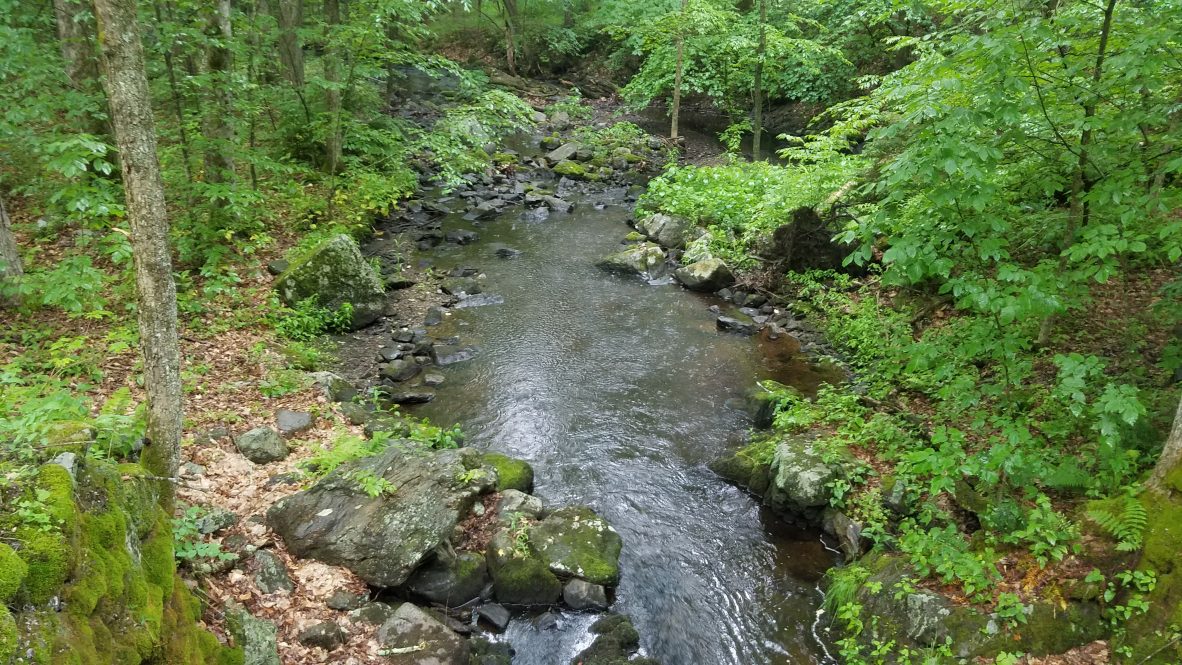Scientists already know that streams and rivers can contribute significant quantities of greenhouse gases to the atmosphere. One way these bodies of water come to contain greenhouse gases is via groundwater, which picks up carbon and nitrogen as it seeps and flows through rock and sediment before it enters rivers. Much research into greenhouse gas emissions from rivers assumes that, before being released into the atmosphere, the gases in this groundwater mix with the currents of rivers and streams. But during low flow conditions, groundwater can seep along streambanks at or above the river surface, creating a pathway for greenhouse gases to escape directly from groundwater into the air.
A team of UConn Department of Natural Resources and the Environment researchers including graduate students Alaina Bisson and Eric Moore, undergraduate Fiona Liu, and Associate Professor Ashley Helton, along with Martin Briggs from the United States Geological Survey (USGS), set out to better understand the quantity of emissions from groundwater rising directly to the surface, also known as groundwater discharge. Their findings are published in the Journal of Geophysical Research: Biogeosciences.
“For the last couple of decades, the research community has been trying to constrain the role streams and rivers play in regional and global greenhouse gas budgets,” says Helton. “We generally know that groundwater can deliver high rates of greenhouse gases to surface waters, but there is a lot of uncertainty around the estimates and there are few direct measurements.
They measured greenhouse gas emissions along riverbanks at three locations in the Farmington River watershed in Connecticut and Massachusetts, concentrating on areas that had groundwater discharge above the waterlines during a typical summer flow season.
At each stream, the team used handheld thermal infrared cameras to identify streambanks with and without areas of exposed groundwater discharge. Once located, the team measured greenhouse gas fluxes (carbon dioxide (CO2), nitrous oxide (N2O), and methane (CH4)) and groundwater discharge rates along the streambanks. They also collected subsurface groundwater samples and analyzed the samples for concentrations of dissolved organic carbon, oxygen, and nitrogen.
At one site, the researchers found that CO2 concentrations were 1.4 to 19.2 times higher in the groundwater discharge than in the surface water, and N2O concentrations were 1.1 to 40.6 times higher. In comparison, stretches of stream with no groundwater seeps acted as N2O sinks. They also found that groundwater emissions of CO2 and N2O were 1.5 and 1.6 times higher than surface water emissions, respectively. On average, 21% of emissions from the groundwater seeps were released into the atmosphere before mixing with surface waters.
“Our findings illustrate that there can be substantial emissions of greenhouse gases directly from groundwater discharge, and that our typical approaches that assume groundwater mixes with river channel water before emissions may really underestimate stream and river emissions in some circumstances,” says Helton.
The authors note that their work shows that exposed groundwater discharge along streambanks can be a significant, often unaccounted-for source of river corridor greenhouse gas emissions. They add that more work should be done to better understand potential emissions from river corridors where groundwater discharge is abundant.
“We are excited that these results may start to help better constrain estimates of greenhouse gas emissions from streams and rivers,” says Helton. “We plan to continue to evaluate the role of groundwater on riverine greenhouse gas emissions in the coming years.”



